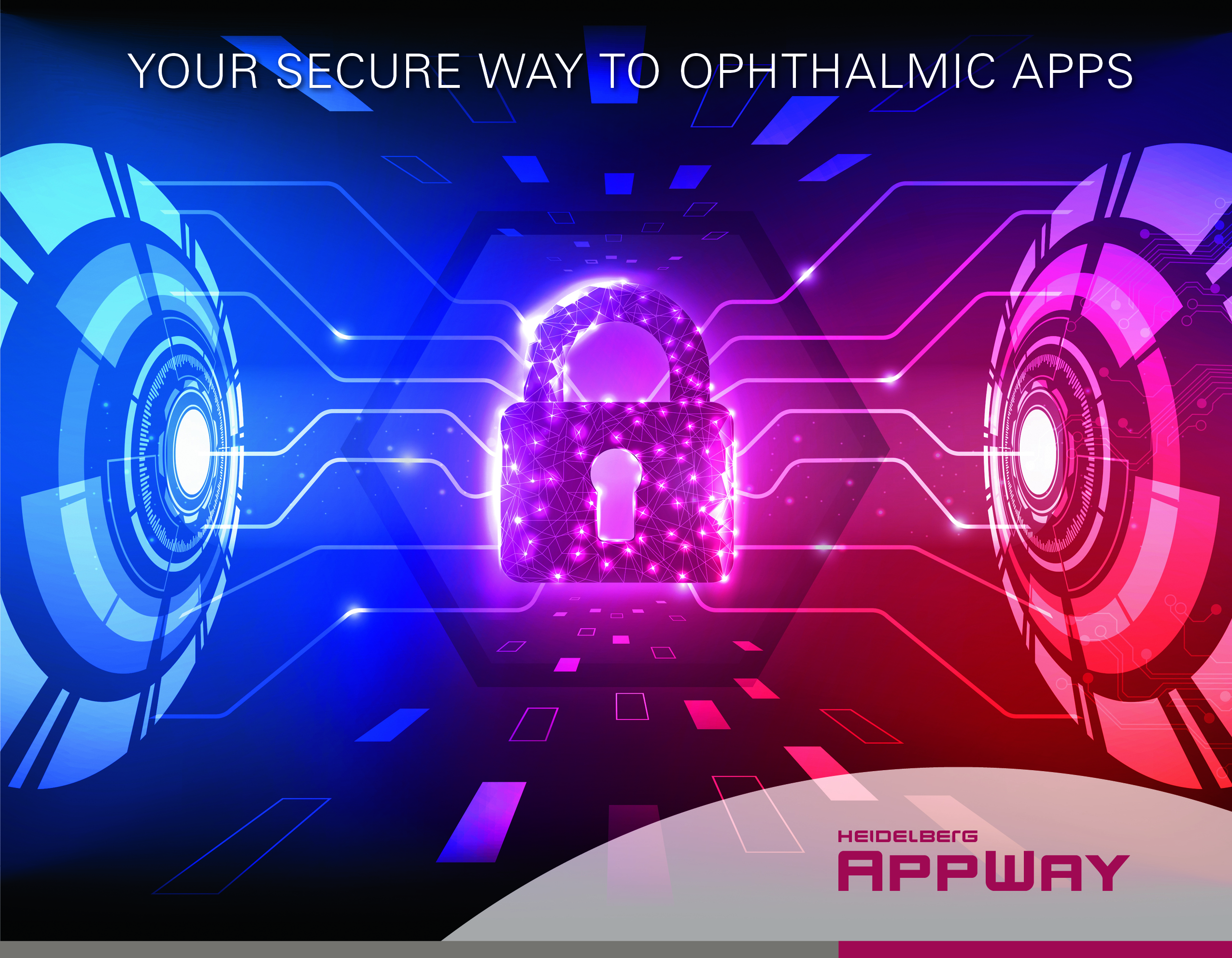Dear Martin,
you are involved in developing the new Heidelberg Eye Explorer. This software includes a Plug-In called Heidelberg AppWay. What is Heidelberg AppWay and for what application was it developed for?
Heidelberg AppWay is our secure gateway for data exchange with ophthalmic application providers. It was developed to enable image data analysis by external app partners in a secure, simple and seamless workflow within the HEYEX 2 image management software.
What do you think is the advantage of being able to integrate external AI applications?
The provision of both clinical and research applications in our software gives our customers access to the latest developments in AI – which, in turn, deliver additional clinical insights and can further improve patient care. Our customers can choose the apps that best support their diagnostic workflow or research objectives and thus offers them the greatest added value.
Why doesn't Heidelberg Engineering simply develop these apps itself?
The technical and analytical possibilities today are immense, and the development of new technologies requires expert knowledge in every conceivable facet. We focus on developing high-quality devices that deliver the best possible image data and on providing a stable as well as secure software environment for image management to create the optimal basis for analysis apps. By providing both high-quality data and a secure infrastructure, we empower our customers to use new analysis technologies once they become available.
In addition, we also develop AI algorithms for use within our products in case the integration of the application into the device adds clinically relevant value to the eye care professional.
What do I have to do to get my developed AI algorithm on your platform? What criteria and certificates must be met?
That's a great question, thank you very much! We look forward to welcoming potential app partners and ask them to get in touch with us via our email address “healthcare-it@heidelbergengineering.com”. We ask all partners to complete an application form that provides us with basic information to start a technical discussion. Of course, we also conduct a technical and clinical evaluation of all applications. From a technical point of view, the app should offer an HL7 interface and should allow for analysis of DICOM files to allow for integration into our system. Preference is given to apps that are already certified medical devices as these can be used by our customers in everyday clinical practice.
Do developers who make their algorithms available get paid for using them?
Our app partners act as own commercial entities. The users of Heidelberg AppWay, whether researchers or clinicians, enter a contract directly with the app providers. The terms and conditions as well as pricing model of each app are the responsibility of the app partners. The users pay the app providers directly for the analysis services they use.
What about liability here? Often, it is not necessarily possible to understand how and why an algorithm decides to do something.
Most of the apps are certified medical devices that prove their quality criteria in the certification process. The liability of the products is therefore guaranteed within the usual regulation processes. Investigational applications that are not registered as medical devices are available for research purposes only under IRB or with ethics approval and are labelled appropriately.
How does the data transfer take place via Heidelberg AppWay? Is it secure at all or do I run the risk of leaking patient data?
Another very good question that many customers approach us with. One of the key benefits of Heidelberg AppWay is to provide a secure environment. The data transfer between our system and the app partners is done with real endpoint encryption. In addition, the data is pseudonymized for transfer and processing at the app provider. The app algorithms do not receive any patient data for processing, only the pure image data. The data is not stored anywhere in the process, it is only being processed. It gets matched to the corresponding patient data and the report is assigned to the respective patient within the Heidelberg Engineering system. The confidential patient data never leaves our image management software.
Are you planning to enable compatibility with other device manufacturers if the data can be exported universally as DICOM? Is the use and evaluation of multimodal imaging data (e.g., Scheimpflug Imaging, OCT) also conceivable?
That is possible. Heidelberg Eye Explorer is designed to import and process third-party image files. Images from a third-party device that is interfaced into the HEYEX 2 image management software can be sent via Heidelberg AppWay to an application partner. However, it is important to note that the algorithms of the app providers must be trained for the third-party devices and respective image data in order to analyze them reliably.
Thanks for answering our questions!!
Further Links:
Learn more on YouTube




